It’s been a little while since I’ve last posted. A lot has happened since late November.
Most notable was the deep freeze we saw this year. A combination of the low flows and bitter cold made for the river almost locking up solid. In fact, a good friend of mine who has fished the river for 50 years sent me the following picture from Church pool early January and said he’s never seen the river this frozen.
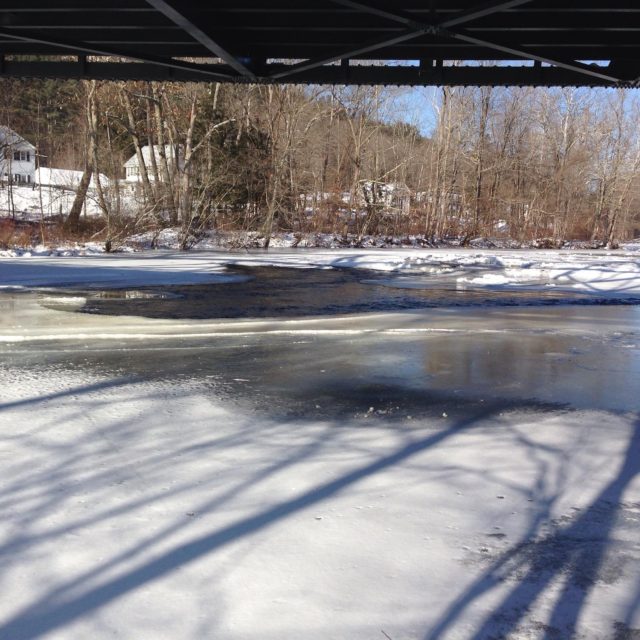
Unless you wanted to fish for pellet heads up in Riverton, the TMA and lower river were all but unfishable.
After the “Arctic Blast” moved back north, we were back to the typical New England winter, and the river didn’t skip a beat. The shelf ice would come and go. Depending on the day, you’d be fighting ice on your everything. But, the one constant was, if you made a good presentation, you could always count on catching winter trout.
Now, I don’t want to oversimplify Winter Fly Fishing. It’s not for the fair-weather fisherman and can, at times, be difficult. But, once you figure it out, it can be incredibly rewarding. On some days, if the bugs are active and you get a water temperature bump of even one degree, you can rack up the numbers like any spring or summer day.
On other days, if there is runoff and the water temps are falling even one degree with no bugs, you’ll be pleased to leave the river without getting skunked. The one nice thing I like about winter fishing is that the fish you do catch have been in the river for a while and are usually better than average, like the ones below.
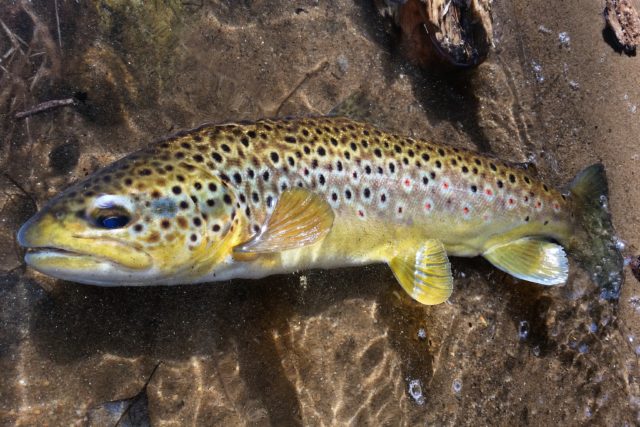

For this post, I was going to put together some tips for winter fishing but Torrey Collins (Instagram: @ctflyguy), who is one of the best guys out there, wrote a piece for the Upcountry Sportfishing river report. Why reinvent the wheel?
If you are going to fish the Farmington River, I highly recommend checking out the river report located here, and, of course, stopping by the shop. There is no better place to go if you are looking for gear than UpCountry Sportfishing. All the guys there are 100% legit fishermen and know what’s up for all types of fishing…not just trout.
So, here are 12 tips for winter fishing from Torrey:
- Don’t start early. Late morning through mid afternoon is not only the warmest (least cold? haha) part of the day, but probably also the best chance to catch some trout on a brutally cold day. Rising water temps increase both trout metabolism & insect activity. The big exception to this is our Winter Caddis hatch, which typically pop early to mid mornings.
- Try to pick sunny days. Sunshine will raise water temps more than anything else, and that in turn get the trout & bugs more active. even on truly cold days. If it is sunny outside and there is morning slush, the sunshine will often melt it by the afternoon (but not always).
- Try to fish a fixed length of line to minimize ice-up of your guides when air temps are below freezing. Short-line nymphing & swinging streamers will both allow you to not have to constantly be retrieving line in & out of the guides. Give your streamers additional action when desired by jiggling/twitching your rod tip rather than stripping line. For nymphing, a 10-11′ rod will greatly assist in managing your line. Loon Stanley’s Ice Off Paste will also delay your guides icing up.
- Make sure your wading shoes don’t fit tightly. Many people size there boots for a perfect fit with thin socks during mild weather, and then when they put a nice thick, warm Merino wool sock on for the cold weather, they have to cram their foot in the boot. Now you cut your circulation off, and the result is ice cube feet. An oversize pair of boots for winter fishing is a great idea.
- Wear a good pair of fingerless gloves. If your hands get really cold, that can pretty much be a day-ender, or at the very least make fishing an unpleasant experience. Half-finger gloves with exposed fingertips will give you dexterity, while still promoting blood flow to your fingers/hands.
- Expect to fish subsurface. While I have seen trout rising well to Winter Caddis & Midges on some super-cold days, that is the exception during extra-cold snaps. It usually greatly slows down the bugs, making nymphs & streamers the way to go. But by all means, if you have risers, match the hatch. Also, the bigger trout tend to stay deep when they feed, with small to average trout dominating the surface feeders (but not true 100% of the time, I do sometimes see large trout eating Midges & Winter Caddis).
- Expect hits to be extra subtle. Cold water = slow trout metabolism. As such they don’t need to eat much at all, and they won’t move much to eat. Even when swinging streamers, you often feel nothing more than your fly stopping, you think you snagged up, but when you pull back there is something wiggling on your line. With nymphs you almost have to hit them on the nose, and those type of strikes can be very subtle and hard to detect. If you are using a strike indicator, it might only hesitate, slow, faintly twitch, or just rotate. Look for any slight change and set the hook. If you are tight-line nymphing, your drift might just slowly stop or even just slow down slightly- set the hook! Some hits are undetectable no matter what you do.
- Be patient. I often have long periods of no action in the winter, and then all of a sudden I’ll have an hour or two of good fishing. It’s not 100% predictable when a “bite window” will happen, but even on really cold days there is often a period when trout put on the feedbag (typically in that late morning to mid afternoon window, but not always).
- Locate the fish. Trout drop out of faster water when water temps are in the 30s, and they tend to pod up in softer water with some depth. Where you find one, there are often many more nearby.
- Go smaller with your nymphs. Most of what trout actually feed on in the winter is small, so your nymph size should reflect that. Think #16-22 on average, with some exceptions (like #8-10 Stoneflies & “Junk Flies” like Mops & Squirmy Worms). Midges are a primary winter food source, and patterns imitating them in #16-24 are often the ticket. Play with colors, flash/no flash, hotspots, etc., until you figure out what triggers a response on any given day.
- The warmest water on cold winter days is up in Riverton, in the two miles or so above the Still River and up to the dam itself. Cold snaps can cause shelf ice & floating slush below the Still River, but if you go above that it NEVER freezes or slushes up. Water is densest at 39.2 degrees, to the water coming out of the dam runs slightly warmer on the coldest days. That does not necessarily mean the water coming out of the dam is 39 degrees, but it is always at least a few degrees above freezing. This can save your ass when you drive to the Church Pool, only to discover it is iced up bank-to-bank or has so much slush coming down that you cannot fish it.
- Read the water carefully, pick what you think is the highest percentage water, and fish it thoroughly. Much of the water is vacant of trout in the winter, and they will pod up in the better spots, but they won’t move much at all to eat your fly. As such, fishing only the best water and fishing it methodically with multiple drifts covering every inch will put the odds in your favor. Fish the pools, deeper/softer runs, and gentle riffles that have some depth. Skip the fast water & pocket water. In the winter, I’ll often re-fish the best spots several times using different flies and/or different tactics. It’s a totally different ballgame than in the spring through fall when the trout are spread out all over the river, their metabolism is in high gear, and lots of bugs are hatching. Don’t be afraid to go small. I fooled this healthy bow with a #22 red midge in a moderately fast riffle.
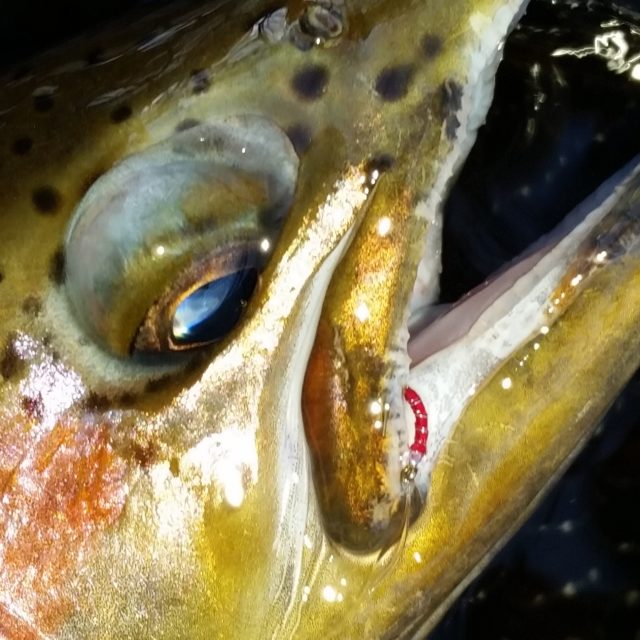
So, those are Torrey’s excellent pointers.
If you get bored with indicator nymphing, don’t be afraid to do some Euro-nymphing. I recently purchased the Thomas and Thomas 11′ 3″, #3 Contact rod and didn’t want to wait until spring to break it in. When I do Euro-nymph in the winter, I focus on softer water and moderate riffles. I picked up these fish while Euro-nymphing over the past few weeks.
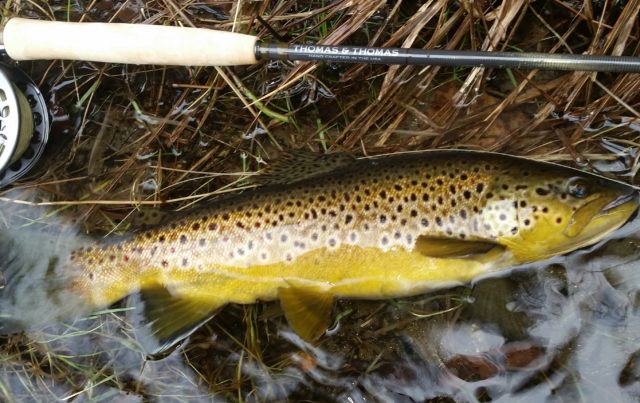
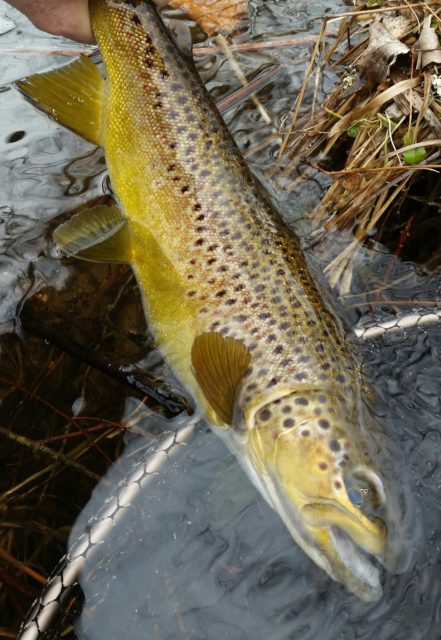
The last two bits of advice I will give you when winter fishing are:
- Add a little flash to your patterns. I’m a big fan of some UV flash to any pattern in the winter. Some days it can make all the difference in the world.
- If you are indicator fishing and not linking up, go deeper. I can’t tell you how many times adding one to two feet of tippet made the difference. Sometimes, the difference between running 10′ to 12′ is all it takes to start catching.
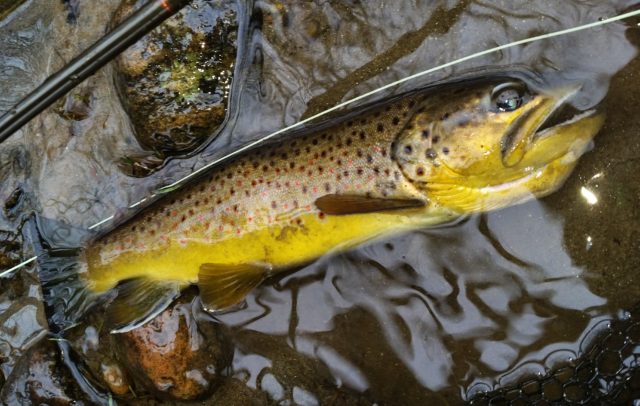
Until next time, tight lines everyone.
Andrew Lyons
Discover more from BlogFlyFish.com
Subscribe to get the latest posts sent to your email.

Andy ; how many of those blood knot whiskers do you keep on your sighter!
John – Nice seeing you today. I use a coiled sighter for my euro rig. I use the cortland bi-color mono and cut a 15″ piece then tie micro swivels on each end. I then use wire ties to secure on end on a 2.5″ 8d finish nail. I wind the sighter around the nail to the end and secure it with another wire tie. I then boil it in water with some vinegar for 5 minutes followed by a quench in ice water and a night in the freezer.
Great stuff as always.